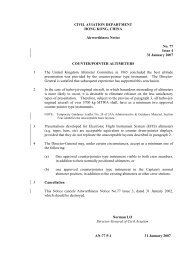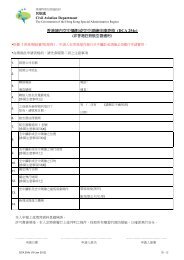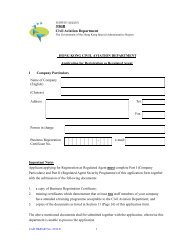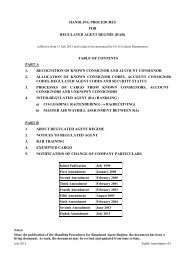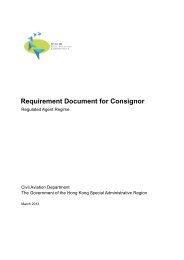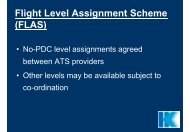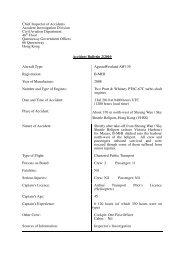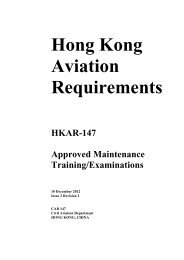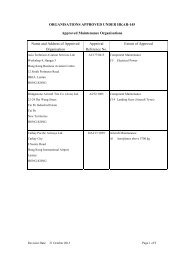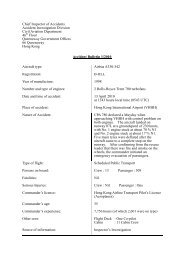CAD 516 Ground Proximity Warning System
CAD 516 Ground Proximity Warning System
CAD 516 Ground Proximity Warning System
You also want an ePaper? Increase the reach of your titles
YUMPU automatically turns print PDFs into web optimized ePapers that Google loves.
5. EXAMPLES OF LIMITATIONS OF CURRENT GPWS EQUIPMENT<br />
5.1 Reduced Effectiveness<br />
5.1.1 As basic or standard GPWS (non-predictive) equipment does not look ahead,<br />
any warning when flight is towards high terrain ahead of the aircraft will be<br />
minimal and dependent upon the steepness of the ground. Hence a sheer cliff<br />
ahead of the aircraft will not generate any warning and any subsequent<br />
warning due to rising ground beyond the cliff will be delayed until the aircraft<br />
is over that ground.<br />
5.1.2 Alerts and warnings are triggered in Modes 1 and 2, only when the aircraft is<br />
below 2500 feet above local terrain. The maximum time in these modes<br />
between triggering an alert or warning and contact with the ground if no<br />
corrective action is taken, is of the order of 20 seconds. However, this time<br />
will be reduced if excessive rates of descent exist or there is rising ground<br />
beneath the aircraft.<br />
5.1.3 Cessation of a Mode 2 warning means only that the aircraft has cleared the<br />
terrain beneath it. There may still be rising terrain ahead of the aircraft.<br />
5.1.4 Flight crew should be aware that, with standard GPWS equipment, if the<br />
aircraft is fully configured for landing, in the absence of electronic glideslope<br />
information, a normal rate of descent to the surface short of a runway will not<br />
trigger any alert or warning.<br />
Issue 1 5 June 2001



